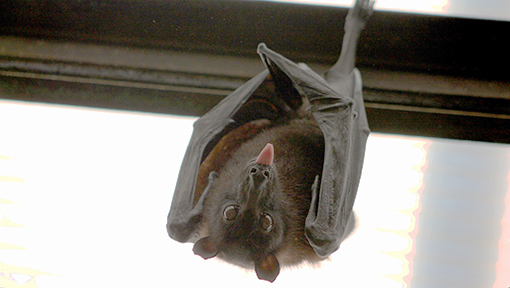14 April 2020


Devastated by summer’s unprecedented firestorms, Australia’s koalas are facing a potentially more serious and enduring existential threat from a fellow mammal – the bat.
A new collaborative study led by Burnet Institute and CSIRO scientists reveals bats as a reservoir for a family of deadly viruses that cause an AIDS-like disease in koalas, a finding with important implications for the conservation of the iconic marsupial.
The study also identified a new addition to the retrovirus family, the first infectious retrovirus found circulating in bats, discovered by co-lead author, Mary Tachedjian, a Senior Experimental Scientist at CSIRO, Australia’s national science agency.
Published in the prestigious journal PNAS (Proceedings of the National Academy of Sciences), the research reveals Australian and Asian bats to be carriers of multiple gammaretroviruses very closely related to the koala retrovirus, known as KoRV.
By depressing the immune system in a similar way to HIV in humans, KoRV renders the koala susceptible to cancers and infections including chlamydia – a cause of infertility, blindness and kidney failure – and is estimated to infect the majority of Australia’s koalas.
Co-lead author of the study, Burnet Research Officer, Dr Joshua Hayward, said retroviruses like HIV are known for being transmitted between different species, and the presence of infectious KoRV-like viruses in bats raises concerns for other Australian animals which could become infected.
 “This could explain how KoRV-related viruses originally got to Australia from South-East Asia in the first place, and it highlights the role of bats as really important reservoirs of viruses that can be transmitted to other animal species,” Dr. Hayward said.
“This could explain how KoRV-related viruses originally got to Australia from South-East Asia in the first place, and it highlights the role of bats as really important reservoirs of viruses that can be transmitted to other animal species,” Dr. Hayward said.
“Our nation is trying to conserve koala populations decimated by the fires, but how can they be protected from viruses? The existence and spread of KoRV and other infectious threats is something likely to concern conservation scientists.
Able to host but remain unaffected by viruses deadly to other mammals – including Ebola, Hendra and Coronaviruses – bats transmit viruses through their droppings and bodily fluids, putting animals that share their habitat, including the koala, at risk.
The new retrovirus discovered by the study that’s closely related to KoRV, named Hervey pteropid gammaretrovirus (HPG), was found to be capable of replicating in human and bat cells in laboratory cell cultures.
“These viruses cause some nasty diseases – leukemias, lymphomas, and immunodeficiency – and while this particular one can infect human cells in the laboratory, whether it can establish infection and cause disease in humans is unknown and would be surprising given current knowledge of this class of retrovirus,” Dr. Hayward said.
Corresponding author of the study, Burnet Institute Head of Life Sciences, and President of the Australasian Virology Society, Professor Gilda Tachedjian, said: “The further we encroach into bat habitats, the greater the chance of a spillover of viruses from bats to animals and humans, so the identification and characterisation of what viruses might be out there is really important.”
Dr Hayward said the study highlights the need for ongoing research into the impact of the spill over of viruses between species, and how we might harness bat antiviral mechanisms to prevent and control viral infections.
“A philanthropic foundation has already recognised the importance of this research and kick-started the next phase,” he said. “Burnet is urgently seeking funding of AUD$186,000, which is a small sum given the devastating impact of KoRV on Koalas.”
This study was led by Burnet Institute and the Australian Centre for Disease Preparedness (formerly the Australian Animal Health Laboratory), Health and Biosecurity Business Unit CSIRO, with major contributions from the Robert Koch Institute, Centre for Biological Threats and Special Pathogens, and The University of Sydney School of Life and Environmental Sciences and Sydney Medical School, Sydney, Australia.



